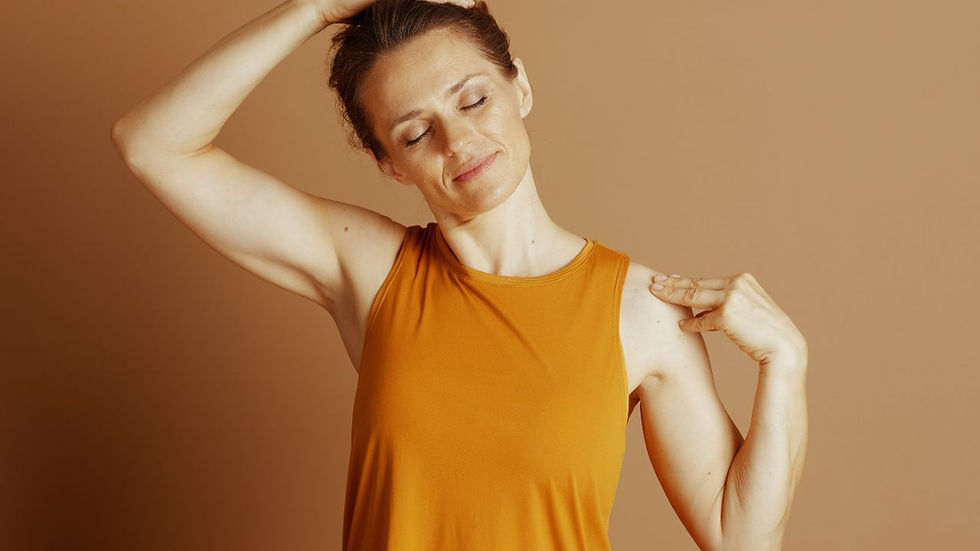"Unknot Your Neck: The Ultimate Guide to Upper Trapezius Muscle Relief -Step 2: The PNF Stretch"
- Ken Belveal
- Apr 23, 2024
- 2 min read

The upper trapezius stretch involving Proprioceptive Neuromuscular Facilitation (PNF) is an advanced form of flexibility training that uses both the stretching and contracting of the muscle group being targeted. PNF stretching is highly effective for increasing flexibility and strengthening muscles, and it can be particularly beneficial for the upper trapezius, which is often subject to tension and tightness.
Here's a step-by-step guide on how to perform a PNF stretch for the upper trapezius:
Step 1: Positioning
Begin in a seated position. Make sure your back is straight and your shoulders are relaxed. Grab under the chair with your right hand then lean your upper body to the left until there is a slight stretch felt in the right shoulder or upper trapezius. This initial posture helps in isolating the upper trapezius during the stretch.
Step 2: Initial Stretch
Gently tilt your head to the left side, bringing your ear toward the shoulder until you feel a stretch on the opposite side of your neck. Slowly turn your head to the right targeting the upper trapezius.
Place your left hand over your head to gently pull your head further into the stretch.
Hold this initial stretch for about 10 seconds.
Step 3: Isometric Hold
Press your head to the right against your hand without allowing your head to move from its tilted position.
Resist the movement with your hand so your head and neck muscles are contracting without actual movement. This isometric contraction should be held for about 5 seconds.
The intensity should be between 3-5 out of 1-10.
Breathe normally and keep your body relaxed elsewhere.
Step 4: Deepen the Stretch
Relax the muscle immediately after the isometric contraction. Then, gently pull your head further into the stretch using your hand for an additional 10 seconds. You should find that you can move slightly further into the stretch after the contraction.
This deepening should be gentle and controlled, without any jerking movements.
Repeat the stretch one more time for a total of 3 times.
Step 5: Repeat
Release the stretch slowly and bring your head back to a neutral position.
Repeat the stretch on the other side to ensure both sides are equally stretched.
Step 6: Frequency
PNF stretching can be intense, so it's recommended to perform these stretches no more than once per session, a few times a week. This frequency can be adjusted based on personal comfort and goals.
Safety Tips:
Always ensure that movements are slow and controlled to prevent any strain or injury.
If you feel any pain beyond a mild stretch sensation, stop immediately.
PNF stretching for the upper trapezius is a powerful way to release tension and increase flexibility in the neck and shoulders, making it a valuable technique for those experiencing tightness or looking to enhance their range of motion effectively.








Comments